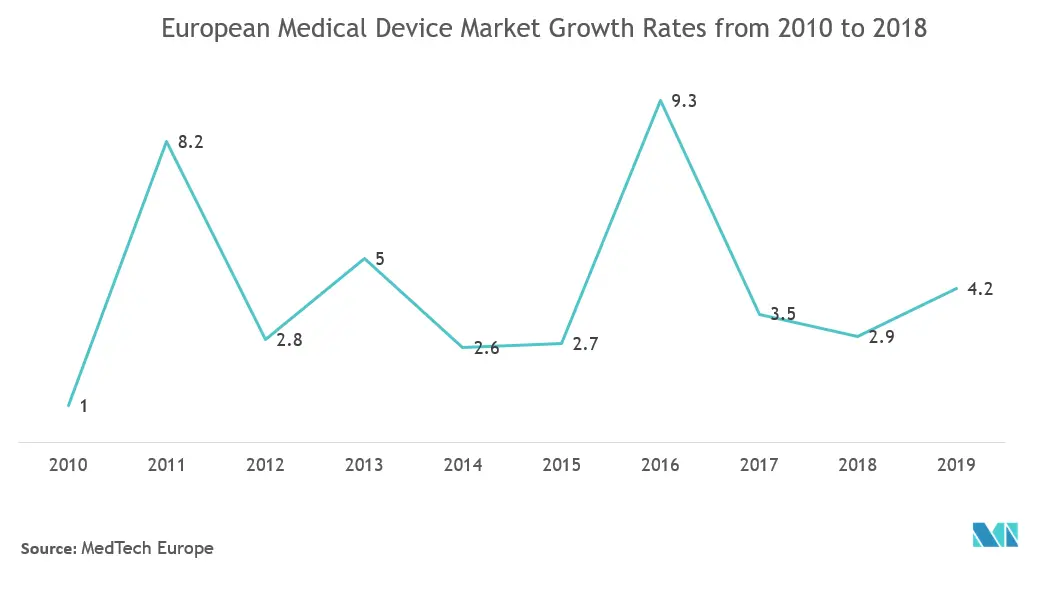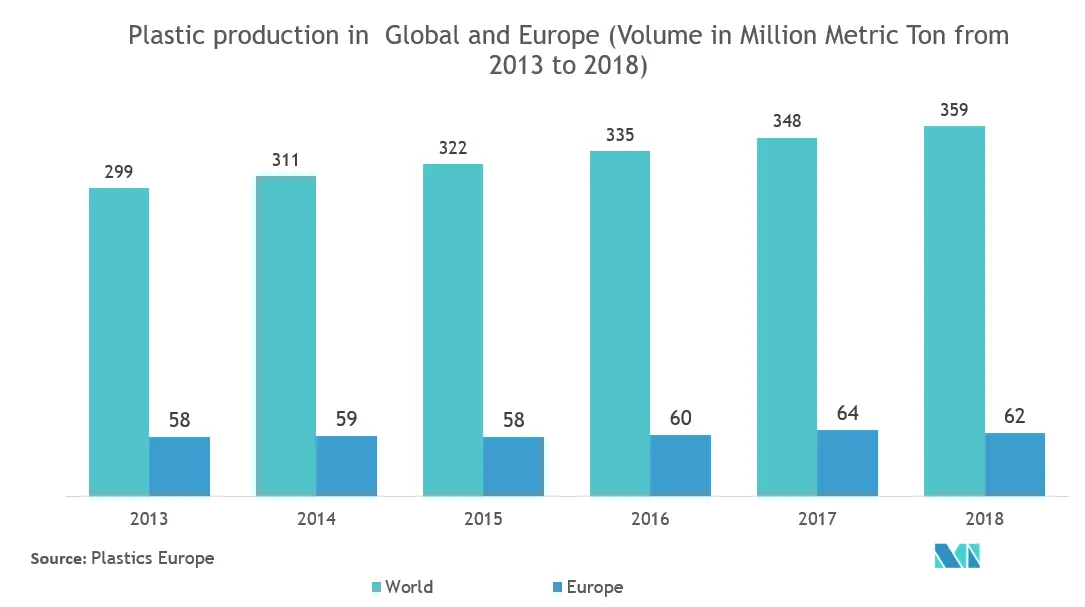Market Trends of Europe Medical Devices Packaging Industry
This section covers the major market trends shaping the Europe Medical Devices Packaging Market according to our research experts:
Pouch segment is expected to grow significantly in the forecast period
- Pouches are widely used containers for small- to medium-sized soft and semi-soft medical goods that are sold in unit quantities and are not vulnerable to damage during shipment and storage. Specific applications of pouches include intravenous (IV) catheters, IV administration sets, dialysis disconnect caps, wound dressings, small surgical instruments, diagnostic test packs, sutures, and dental supplies.
- Many films are used in medical device packaging applications. These materials offer a high degree of versatility and are available in a variety of forms in mono films, laminations, and coextrusions. The specific material to be used for a medical device is dependent upon the performance properties required for the device application.
- Pouches have been manufactured from laminated paper with polyolefin layers. Uncoated nonwoven polyolefin materials for use in the manufacture of heat-sealable pouches are highly being used. Applications such as, the Sterilization method (e.g., the material must tolerate high temperature), Protection requirements (e.g., high puncture resistance) are some features that cater to demand.
- Further, selecting the appropriate pouch size prevents the overloading of instruments and allows penetration of the sterilant with adequate air removal and less chance of puncture or tearing. There should be a lesser of one inch of space between the top of the instruments and the seal of the pouch. Medical Kraft paper used in sterilization pouches has a basic weight of 40 to 60 pounds and contains only approved additives, which has controlled porosity and has no pinholes greater than 0.5 cubic meters.
- Furthermore, the latest development from Amcor allows for a simplified, faster, and more effective packaging solution for reusable medical devices. In April 2020, Amcor’s ULTRA pouches are now certified for vaporized hydrogen peroxide sterilization as well as steam sterilization at 134°C. This means that ULTRA pouches can provide a one-stop solution for the sterilization of all reusable medical devices. The new accreditation provides the assurance that ULTRA pouches are compliant with the latest international and European EN 868 and ISO 11607 standards, including the Sterile Barrier System (SBS) requirement.

Plastic segment is expected to grow significantly in the forecast period
- Europe is one of the fastest-growing plastic packaging markets in the world. The region has large packaging companies, such as Amcor, Sealed Air Corporation, and Berry Global, which drive investments in innovation, research, and development activities.
- Plastic packaging has implemented new ways for the functioning of the packaging industry. Packaging solutions that are durable, lightweight, and comfortable have augmented the use of plastics as a packaging material across the region.
- The demand for plastic packaging continues to rise in Europe even though serious concerns are being raised about its impact on the environment. However, the market also faces challenges due to the government regulations in Europe and increasing consumer demand that pushes manufacturers to look for plastic packaging solutions that are biodegradable or derived from sustainable sources and use that in medical device packaging.
- However, there are increasing concerns about hygiene and safety with the coronavirus pandemic, which could increase the use of plastic packaging solutions in Europe. There is an increase in demand for single-use packaging due to the rise in medical devices delivery further affecting the demand for polystyrene, polyethylene, and plastic packaging materials.
- The price of LDPE packaging is currently low in the region, which means that there will be minimal impact on the sellers from the additional cost of using the material. The demand for surgical masks, which are made of materials, such as polypropylene, polyisoprene, and polyurethane, has also increased.


